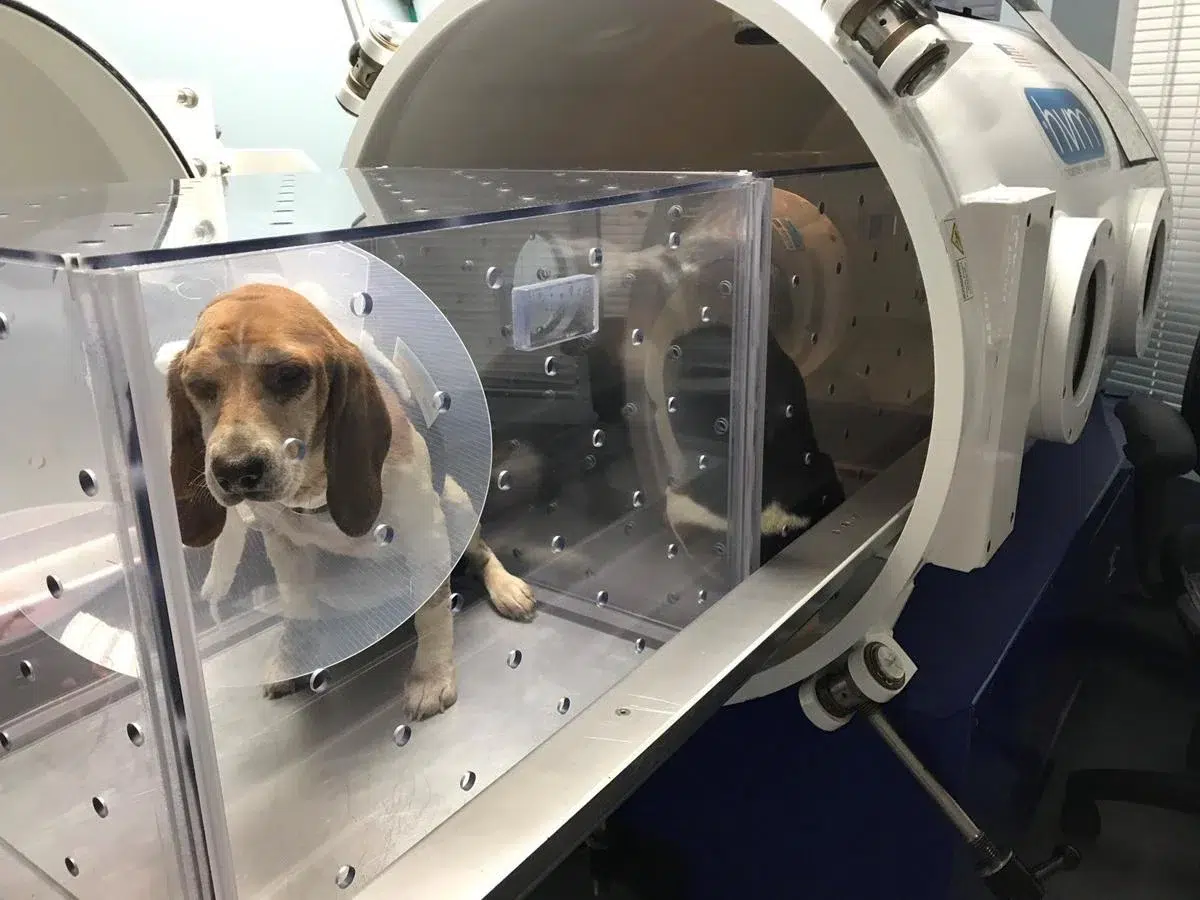
A dog’s spine is essential not only for supporting their body but also for enabling them to run, jump, play, and engage in all those delightful antics we love. Unfortunately, spinal injuries in dogs are not uncommon and can result from various causes such as trauma (e.g. being hit by a car or falling), degenerative conditions like Intervertebral Disc Disease (IVDD), or even tumours. If you suspect your canine companion may have a spinal injury, it’s important to recognise the signs and understand the available treatment options. In this blog, we’ll discuss common symptoms of spinal injuries, explain why rehabilitation matters, and explore how hyperbaric oxygen therapy (HBOT) can help speed up your dog’s recovery.
Table of Contents
ToggleBecause dogs can’t communicate verbally, it’s our responsibility to watch out for changes in their behaviour or mobility. Signs of a spinal injury may include:
If you notice any of these signs, consult a vet as soon as possible. Early intervention can often prevent further damage and significantly improve your pet’s chances of making a successful recovery.
Just like in human medicine, rehabilitation plays a critical role in helping dogs recover from spinal injuries. While surgery or medication may be required initially—for instance, to decompress the spinal cord or manage severe pain—rehab helps your dog rebuild strength, regain mobility, and restore confidence over time. A tailored rehabilitation programme often includes:
These methods can be combined and adjusted to suit your dog’s specific condition, offering a comprehensive approach to healing.
Hyperbaric Oxygen Therapy (HBOT) has gained recognition for its potential to accelerate healing in various conditions, including spinal injuries in dogs. Here’s why it’s so effective:
Many veterinary rehabilitation centres now include hyperbaric oxygen therapy as part of a multimodal approach to treating spinal injuries. While it may not always be the first-line treatment, it can be incredibly beneficial when combined with physiotherapy, hydrotherapy, and other supportive therapies.
Every dog’s recovery will differ, based on factors such as injury severity and overall health. Here’s a snapshot of what the rehabilitation process might entail:
Spinal injuries in dogs can be daunting, but with prompt veterinary care, a dedicated rehabilitation plan, and advanced treatments like hyperbaric oxygen therapy, your beloved companion can reclaim a happier, more active life. Early detection, timely intervention, and a holistic approach to healing are crucial for the best possible outcome.
At RehabVet, we’re passionate about guiding you and your pet through every step of the recovery process. From thorough assessments to state-of-the-art rehabilitation methods, our team is committed to helping dogs overcome the challenges of spinal injuries—so they can return to wagging their tails and enjoying life to the fullest.
If you suspect your dog has a spinal injury or would like to learn more about hyperbaric oxygen therapy and other rehabilitation options, get in touch with us today. Together, we’ll develop a personalised plan to help your furry friend heal, thrive, and get back on all four paws!